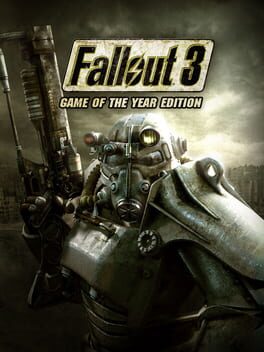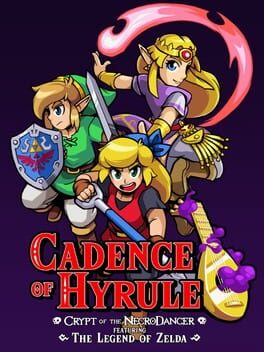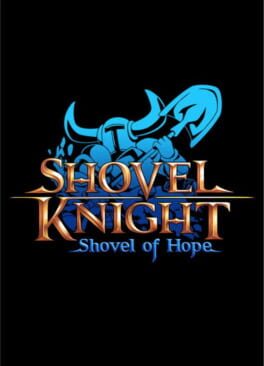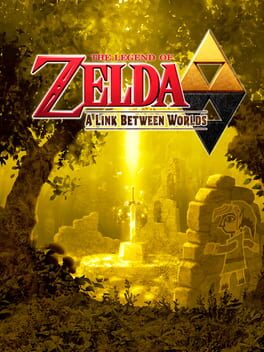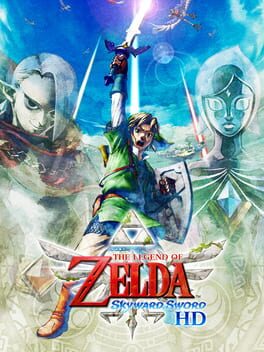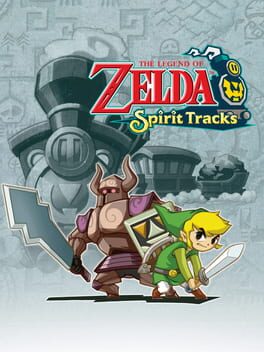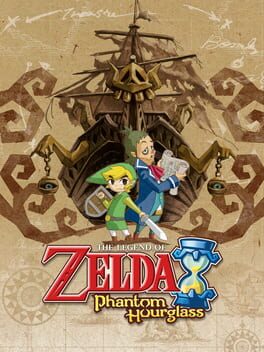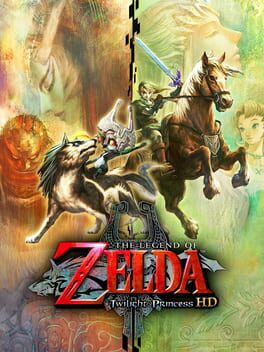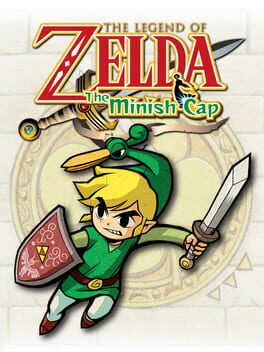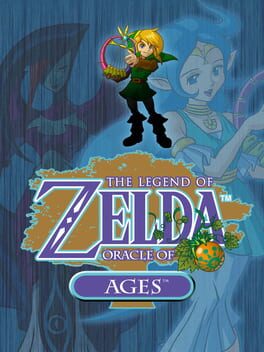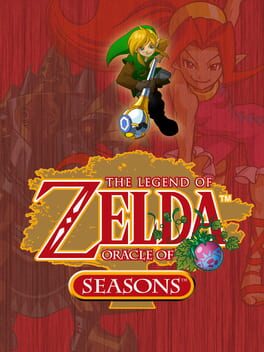Linkerton
This review contains spoilers
Tears of the Kingdom is a disappointing masterpiece. It can be overwhelming, but still a great time. The consequences of non-linearity are now showing more than ever, but that open-world is still so charming.
One year ago, I started a Zelda marathon. I played through (almost) every mainline Zelda game in release order, leading up to Tears of the Kingdom. However, all of those were actually replays, so it was a lot easier to write a review on the spot upon completing each game. For Tears, I had to take time to fully absorb the game into my being so that I could grasp how exactly I felt about the game. So, let’s just dive into it. This is gonna be a long ramble.
Right off the bat, to get this out of the way, Tears of the Kingdom uses the same engine as Breath of the Wild, which is mostly fine with me. In 2017, the engine was quite incredible. The hardware was definitely holding it back a little, but it was still great. However, now that we’re in 2023, the hardware is severely outdated. For 2023 standards, Tears looks very fuzzy, and is still capped at 30 FPS. It’s very easy to look past these flaws since you get used to them after a while of playing (and since the game can be quite fun), but it is still an issue worth mentioning. This is not a fault of the game at all, it is simply the fact that we NEED newer and more powerful hardware from Nintendo. Now that we have that out of the way, we can talk about the game itself. Tears of the Kingdom directly addresses some of the criticisms of Breath of the Wild. However, with these issues they addressed, it always felt like they could have taken it a step further.
A main complaint of Breath’s Divine Beasts was the lack of distinct theming between them, and how similar each of the bosses were. They all had very similar color palettes and reused assets. In Tears, the dungeons all have very distinct theming and layouts, with very unique (and quite fun) bosses. In this aspect, it’s safe to say that this is an improvement.
However, I think most people were hoping/expecting for the dungeons themselves to be closer to “traditional” Zelda dungeons. This is NOT in the case in Tears. They decided to reuse the “terminal” puzzles from the Divine Beasts, likely to once again allow you to complete puzzles in any order you choose. However, this just makes each dungeon feel very short, simple, and easy. In fact, they might even be shorter and simpler than the dungeons from Breath. In that game, you could manipulate certain mechanical aspects of the Divine Beasts through the map menu, allowing for some clever puzzle design. In Tears, you simply have to track down each terminal and activate them. There were a few instances where it was actually puzzling to find certain terminals, so I will give them props for that, but in other instances it was PAINFULLY easy. Though, each dungeon did have a very fun lead-up quest where you acquire a companion, but the companions themselves are… less than ideal. We’ll talk about them later.
As far as adventuring goes, there is much more to explore in the world this time around. There are caves, sky islands, and the depths, which essentially doubles the size of the original map. I’m perfectly okay with this. There really wasn’t much in terms of interesting rewards for exploring the game world (due to non-linearity), and the sky islands were a bit empty, but just like Breath, it's a joy to explore. I like the overworld itself being open, as it breathes new life into the franchise compared to previous overworlds like Ocarina of Time and Twilight Princess. I just wish that the dungeons were more tight and linear, like I was saying previously.
Another issue that Tears tries to address is Breath’s weapon degradation. This time around, you can collect monster parts and fuze them to weapon parts to create more powerful and slightly more durable weapons. However, they will still degrade, and they will still break, unless you give one to an Octorok (which can only be done once per Octorok, once per blood moon). I would say that this system definitely works better than Breath of the Wild. When your weapons break, instead of constantly hunting down new weapons, you simply craft your own, but there should definitely be an easier way to repair them. The Octorok method feels very out of the way.
As for things that are brand new, Nintendo leaned even further into the sandbox approach for Tears. A mechanic in this game is the ability to just straight up build machines, whether that be vehicles or giant laser cannons. While I am glad a mechanic like this exists, as it allows so much creativity, I found myself getting bored with it at times. I built the fabled “air bike” that everyone raved about. For a bit, it felt great to fly around with, but then I found myself skipping over lots of interesting areas and avoiding combat scenarios, since I could just fly straight to all my destinations. So after a while, I ended up sticking to on-foot traversal, as well as horseback.
Another new mechanic is the companions, or “Sages”, as the game calls them. At first, I was ecstatic about this. But then came the problem: They control pretty terribly. The only way to activate a Sage’s power is to walk over to them and wait for the “A Button” prompt to pop up. This works fine in some instances, but in heated combat, it almost feels like the Sages will run away from you when you try to approach them. To contrast this, the Sages also like to get in your way when you don’t want to use them. I can’t tell you how many times I went to pick up some items on the ground and Tulin decided to blow them all away with his wind power. It always felt as though the Sages should be on the tool wheel in place of the “map” ability, which has no right being on that wheel, as there is already a dedicated button for the map. Why would you need another one? So in this aspect, the controls in this game are actually far more clunky than its predecessor.
I feel like I could say a million more things about this game, but I think I hit all the main points I wanted to make. I guess if I had to make one big statement about Tears of the Kingdom, it’s that we NEED to do something different for the next installment. They’ve definitely worn out this specific formula. We should venture away from Hyrule, or maybe we could play AS Zelda herself. They can keep it open-world, but bring back some linearity as well. It’s absolutely possible to marry these two concepts. Have the overworld be open, and have the dungeons be linear. Sadly, it doesn’t seem like series producer Eiji Aonuma sees eye-to-eye with me on this. In a recent interview with IGN, he was quoted saying: "It's interesting when I hear people say [they prefer the old entries] because I am wondering, 'Why do you want to go back to a type of game where you're more limited or more restricted in the types of things or ways you can play?' But I do understand that desire that we have for nostalgia, and so I can also understand it from that aspect,".
The fact that he chalks up the love for linearity to “nostalgia” makes the future seem a little less bright for fans of the more traditional Zelda formula. Again, I love the open world, but there has got to be a way to merge these two formulas together. If they can pull it off, it could be incredible. But until then, I guess we’re just stuck pondering, and stuck waiting for another 2D Zelda to fill the void (PLEASE I NEED IT).
This has been a long ramble. Thanks if you read the whole thing. I love you :)
One year ago, I started a Zelda marathon. I played through (almost) every mainline Zelda game in release order, leading up to Tears of the Kingdom. However, all of those were actually replays, so it was a lot easier to write a review on the spot upon completing each game. For Tears, I had to take time to fully absorb the game into my being so that I could grasp how exactly I felt about the game. So, let’s just dive into it. This is gonna be a long ramble.
Right off the bat, to get this out of the way, Tears of the Kingdom uses the same engine as Breath of the Wild, which is mostly fine with me. In 2017, the engine was quite incredible. The hardware was definitely holding it back a little, but it was still great. However, now that we’re in 2023, the hardware is severely outdated. For 2023 standards, Tears looks very fuzzy, and is still capped at 30 FPS. It’s very easy to look past these flaws since you get used to them after a while of playing (and since the game can be quite fun), but it is still an issue worth mentioning. This is not a fault of the game at all, it is simply the fact that we NEED newer and more powerful hardware from Nintendo. Now that we have that out of the way, we can talk about the game itself. Tears of the Kingdom directly addresses some of the criticisms of Breath of the Wild. However, with these issues they addressed, it always felt like they could have taken it a step further.
A main complaint of Breath’s Divine Beasts was the lack of distinct theming between them, and how similar each of the bosses were. They all had very similar color palettes and reused assets. In Tears, the dungeons all have very distinct theming and layouts, with very unique (and quite fun) bosses. In this aspect, it’s safe to say that this is an improvement.
However, I think most people were hoping/expecting for the dungeons themselves to be closer to “traditional” Zelda dungeons. This is NOT in the case in Tears. They decided to reuse the “terminal” puzzles from the Divine Beasts, likely to once again allow you to complete puzzles in any order you choose. However, this just makes each dungeon feel very short, simple, and easy. In fact, they might even be shorter and simpler than the dungeons from Breath. In that game, you could manipulate certain mechanical aspects of the Divine Beasts through the map menu, allowing for some clever puzzle design. In Tears, you simply have to track down each terminal and activate them. There were a few instances where it was actually puzzling to find certain terminals, so I will give them props for that, but in other instances it was PAINFULLY easy. Though, each dungeon did have a very fun lead-up quest where you acquire a companion, but the companions themselves are… less than ideal. We’ll talk about them later.
As far as adventuring goes, there is much more to explore in the world this time around. There are caves, sky islands, and the depths, which essentially doubles the size of the original map. I’m perfectly okay with this. There really wasn’t much in terms of interesting rewards for exploring the game world (due to non-linearity), and the sky islands were a bit empty, but just like Breath, it's a joy to explore. I like the overworld itself being open, as it breathes new life into the franchise compared to previous overworlds like Ocarina of Time and Twilight Princess. I just wish that the dungeons were more tight and linear, like I was saying previously.
Another issue that Tears tries to address is Breath’s weapon degradation. This time around, you can collect monster parts and fuze them to weapon parts to create more powerful and slightly more durable weapons. However, they will still degrade, and they will still break, unless you give one to an Octorok (which can only be done once per Octorok, once per blood moon). I would say that this system definitely works better than Breath of the Wild. When your weapons break, instead of constantly hunting down new weapons, you simply craft your own, but there should definitely be an easier way to repair them. The Octorok method feels very out of the way.
As for things that are brand new, Nintendo leaned even further into the sandbox approach for Tears. A mechanic in this game is the ability to just straight up build machines, whether that be vehicles or giant laser cannons. While I am glad a mechanic like this exists, as it allows so much creativity, I found myself getting bored with it at times. I built the fabled “air bike” that everyone raved about. For a bit, it felt great to fly around with, but then I found myself skipping over lots of interesting areas and avoiding combat scenarios, since I could just fly straight to all my destinations. So after a while, I ended up sticking to on-foot traversal, as well as horseback.
Another new mechanic is the companions, or “Sages”, as the game calls them. At first, I was ecstatic about this. But then came the problem: They control pretty terribly. The only way to activate a Sage’s power is to walk over to them and wait for the “A Button” prompt to pop up. This works fine in some instances, but in heated combat, it almost feels like the Sages will run away from you when you try to approach them. To contrast this, the Sages also like to get in your way when you don’t want to use them. I can’t tell you how many times I went to pick up some items on the ground and Tulin decided to blow them all away with his wind power. It always felt as though the Sages should be on the tool wheel in place of the “map” ability, which has no right being on that wheel, as there is already a dedicated button for the map. Why would you need another one? So in this aspect, the controls in this game are actually far more clunky than its predecessor.
I feel like I could say a million more things about this game, but I think I hit all the main points I wanted to make. I guess if I had to make one big statement about Tears of the Kingdom, it’s that we NEED to do something different for the next installment. They’ve definitely worn out this specific formula. We should venture away from Hyrule, or maybe we could play AS Zelda herself. They can keep it open-world, but bring back some linearity as well. It’s absolutely possible to marry these two concepts. Have the overworld be open, and have the dungeons be linear. Sadly, it doesn’t seem like series producer Eiji Aonuma sees eye-to-eye with me on this. In a recent interview with IGN, he was quoted saying: "It's interesting when I hear people say [they prefer the old entries] because I am wondering, 'Why do you want to go back to a type of game where you're more limited or more restricted in the types of things or ways you can play?' But I do understand that desire that we have for nostalgia, and so I can also understand it from that aspect,".
The fact that he chalks up the love for linearity to “nostalgia” makes the future seem a little less bright for fans of the more traditional Zelda formula. Again, I love the open world, but there has got to be a way to merge these two formulas together. If they can pull it off, it could be incredible. But until then, I guess we’re just stuck pondering, and stuck waiting for another 2D Zelda to fill the void (PLEASE I NEED IT).
This has been a long ramble. Thanks if you read the whole thing. I love you :)
The DLC for Breath of the Wild is awesome. It adds a lot of fun content to the game.
The first pack added some new items and outfits, the Travel Medallion, and Master Mode. There's also the Trial of the Sword, which is definitely the highlight of this pack. It is a fun combat challenge that powers up the Master Sword, which is a great reward.
Just like the first pack, the second pack added more new items and outfits, but there was also the Ancient Horse Gear, and the Champions' Ballad quest, which adds on to the main story of the game. It has a combat challenge on the Great Plateau, more shrines with great puzzles, an extra dungeon, an awesome boss, and an overpowered endgame reward. This quest is a lot of fun.
Overall, this DLC is just more Breath of the Wild, but that's not a bad thing. Most of the added items and outfits are fun to collect, Trial of the Sword is dope, and the Champions' Ballad is great. It's definitely worth purchasing if you're a big fan of the base game.
The first pack added some new items and outfits, the Travel Medallion, and Master Mode. There's also the Trial of the Sword, which is definitely the highlight of this pack. It is a fun combat challenge that powers up the Master Sword, which is a great reward.
Just like the first pack, the second pack added more new items and outfits, but there was also the Ancient Horse Gear, and the Champions' Ballad quest, which adds on to the main story of the game. It has a combat challenge on the Great Plateau, more shrines with great puzzles, an extra dungeon, an awesome boss, and an overpowered endgame reward. This quest is a lot of fun.
Overall, this DLC is just more Breath of the Wild, but that's not a bad thing. Most of the added items and outfits are fun to collect, Trial of the Sword is dope, and the Champions' Ballad is great. It's definitely worth purchasing if you're a big fan of the base game.
Breath of the Wild is a flawed masterpiece, through and through. For every great thing the game does, there is a flaw that holds it back a little.
The open world is gorgeous and an absolute joy to explore, BUT it can feel a little empty too. The combat system is one of the best in the series, BUT the enemy variety and bosses are lacking. There is a wide variety of weapons at your disposal, BUT they break so fast that you barely get a chance to use them before they're shattered. The list goes on but you get the idea.
Breath of the Wild also somehow manages to be the hardest and easiest Zelda game at the same time. The beginning of the game can be quite difficult as you have lower level gear and are still getting used to the controls, but right as soon as you have enough rupees for good armor and find good weapons, the game becomes a complete cakewalk.
The Divine Beasts are a cool idea in concept. Four mechanical beasts that you have to board and take over from the inside seems like an awesome idea for dungeons, but they fall utterly short of what makes a standard Zelda dungeon great. They're really easy, really short, but they aren't quite as terrible as people make them out to be. The quests leading up to all four Beasts are a lot of fun, but yes, I will admit that I hope Nintendo brings back something resembling traditional dungeons for Tears of the Kingdom.
The performance is another issue with this game, but it can be looked past (for the most part). As of the most recent updates, it runs at a fairly stable 30fps. Some areas will chug, and that sucks, but I have to applaud Nintendo for making it work upon the Switch's launch. Nowadays, the Switch is in dire need of a hardware upgrade, but that's a whole other can of worms.
But goddamn, there's just something about this game that's so enchanting. Exploring is a blast with the climbing and gliding mechanics. The gameplay loop of finding new areas, completing shrines, and battling it out with various enemies is so much fun. Being able to collect all kinds of armor and outfits, as well as using materials to cook meals and upgrade items is a welcome addition to Zelda. The soundtrack, while very ambient at times, is gorgeous, and especially shines with the town themes and the four champion themes. The game's presentation is very polished, even if it's performance and graphics are not quite up to snuff.
A lot of people say "This is a good game, it's just not a good Zelda game", but I don't really understand that sentiment. Nintendo has mixed it up and done something different with pretty much every 3D Zelda, and this game is no exception. Yes, the inclusion of a completely "open air" experience is very new for Zelda, but I don't think it's detrimental to the series the way people make it out to be. The end of the game and the credits sequence are a little underwhelming when compared to endings like Ocarina of Time and Majora's Mask, but it suffices.
Despite the flaws, Breath of the Wild still somehow manages to be one of the most fun games in the series. Traversing Hyrule has never felt so good, and I don't blame anyone for being able to look past it's flaws to see a great experience shining through, the way I am able to.
The open world is gorgeous and an absolute joy to explore, BUT it can feel a little empty too. The combat system is one of the best in the series, BUT the enemy variety and bosses are lacking. There is a wide variety of weapons at your disposal, BUT they break so fast that you barely get a chance to use them before they're shattered. The list goes on but you get the idea.
Breath of the Wild also somehow manages to be the hardest and easiest Zelda game at the same time. The beginning of the game can be quite difficult as you have lower level gear and are still getting used to the controls, but right as soon as you have enough rupees for good armor and find good weapons, the game becomes a complete cakewalk.
The Divine Beasts are a cool idea in concept. Four mechanical beasts that you have to board and take over from the inside seems like an awesome idea for dungeons, but they fall utterly short of what makes a standard Zelda dungeon great. They're really easy, really short, but they aren't quite as terrible as people make them out to be. The quests leading up to all four Beasts are a lot of fun, but yes, I will admit that I hope Nintendo brings back something resembling traditional dungeons for Tears of the Kingdom.
The performance is another issue with this game, but it can be looked past (for the most part). As of the most recent updates, it runs at a fairly stable 30fps. Some areas will chug, and that sucks, but I have to applaud Nintendo for making it work upon the Switch's launch. Nowadays, the Switch is in dire need of a hardware upgrade, but that's a whole other can of worms.
But goddamn, there's just something about this game that's so enchanting. Exploring is a blast with the climbing and gliding mechanics. The gameplay loop of finding new areas, completing shrines, and battling it out with various enemies is so much fun. Being able to collect all kinds of armor and outfits, as well as using materials to cook meals and upgrade items is a welcome addition to Zelda. The soundtrack, while very ambient at times, is gorgeous, and especially shines with the town themes and the four champion themes. The game's presentation is very polished, even if it's performance and graphics are not quite up to snuff.
A lot of people say "This is a good game, it's just not a good Zelda game", but I don't really understand that sentiment. Nintendo has mixed it up and done something different with pretty much every 3D Zelda, and this game is no exception. Yes, the inclusion of a completely "open air" experience is very new for Zelda, but I don't think it's detrimental to the series the way people make it out to be. The end of the game and the credits sequence are a little underwhelming when compared to endings like Ocarina of Time and Majora's Mask, but it suffices.
Despite the flaws, Breath of the Wild still somehow manages to be one of the most fun games in the series. Traversing Hyrule has never felt so good, and I don't blame anyone for being able to look past it's flaws to see a great experience shining through, the way I am able to.
A Link Between Worlds is an absolute blast.
Even though it uses the same basic map (with a few changes) as A Link to the Past, this is a completely different experience. This is probably the most "smooth" feeling 2D Zelda. The movement and combat just feels so pleasant to control. On top of that, the new mechanic that allows you to "merge" into walls is awesome, and a ton of fun to use for solving puzzles.
One the common complaints I see about this game is that it is too easy. And while yes, the game is pretty easy, it's still so much fun. They jam packed so many collectables into such a small world, and most of those collectables are actually very useful for powering up Link.
A Link Between Worlds has a non-linear dungeon progression, and because of that, instead of finding key items in dungeons, you rent and/or buy them from a character named Ravio. This allows the game to feel more open. The item rental system isn't my absolute favorite, but I appreciate the developers for trying something new and experimenting with the traditional dungeon and item progression. Plus, Ravio is an awesome character.
Speaking of the dungeons, they're a lot of fun. While none of them are super difficult (which is a consequence of non-linearity), they're excellently themed, and are an absolute pleasure to blast through.
In conclusion, A Link Between Worlds is my favorite 2D Zelda game, and I really hope Nintendo comes out with a new original 2D Zelda in the near future. It's been TEN YEARS now.
Even though it uses the same basic map (with a few changes) as A Link to the Past, this is a completely different experience. This is probably the most "smooth" feeling 2D Zelda. The movement and combat just feels so pleasant to control. On top of that, the new mechanic that allows you to "merge" into walls is awesome, and a ton of fun to use for solving puzzles.
One the common complaints I see about this game is that it is too easy. And while yes, the game is pretty easy, it's still so much fun. They jam packed so many collectables into such a small world, and most of those collectables are actually very useful for powering up Link.
A Link Between Worlds has a non-linear dungeon progression, and because of that, instead of finding key items in dungeons, you rent and/or buy them from a character named Ravio. This allows the game to feel more open. The item rental system isn't my absolute favorite, but I appreciate the developers for trying something new and experimenting with the traditional dungeon and item progression. Plus, Ravio is an awesome character.
Speaking of the dungeons, they're a lot of fun. While none of them are super difficult (which is a consequence of non-linearity), they're excellently themed, and are an absolute pleasure to blast through.
In conclusion, A Link Between Worlds is my favorite 2D Zelda game, and I really hope Nintendo comes out with a new original 2D Zelda in the near future. It's been TEN YEARS now.
Skyward Sword is one of the most unique Zelda games, but it's also probably the most "on-rails" Zelda game ever made.
A large part of the game's main functions are played using motion controls, and while the HD version now has an option for traditional button controls, the game was originally designed with the motion controls in mind.
In my opinion, the one-to-one motion controlled swordplay has always been a lot of fun in Skyward Sword, but some of the other functions like flying and swimming kind of suck to use motion controls with. In the HD version, you can turn the motion controls on or off at any time, but I wish there was a way to customize it, so that you always control swordplay with motion, and flying/swimming without.
On top of the fun swordplay, this game has some of the most fun and inventive dungeons in the series. I particularly love the Lanayru Mining Facility, the Ancient Cistern and the Sandship (despite the Sandship's boss design being laughably ugly). They all utilize the dungeon items very well, and actually make significant use of your entire item arsenal.
As for the game's main progression, instead of exploring the world in-between dungeons, you're basically just going through a sequence of "set-pieces". You are told exactly where to go at all times and when you arrive at those places, you do exactly what the game tells you. Now, to be fair, some of these set-pieces are a lot of fun. The section leading up to the Sandship is awesome, with the minecarts and time-shift stones. But, there are set-pieces that are dull, repetitive, and monotonous. Escorting Scrapper up the volcano, flying repeatedly to the Isle of Songs, and having the fight The Imprisoned three times are all examples of where the game kind of sucks.
Despite the flaws, I still find myself enjoying this game quite a bit. Especially in the HD version with 60fps and a free camera.
All in all, Skyward Sword is a fun experience. The swordplay is fun, the dungeons are great, the story is interesting, and the soundtrack is exquisite. It just has a few flaws that hold it back from being one of the greats.
A large part of the game's main functions are played using motion controls, and while the HD version now has an option for traditional button controls, the game was originally designed with the motion controls in mind.
In my opinion, the one-to-one motion controlled swordplay has always been a lot of fun in Skyward Sword, but some of the other functions like flying and swimming kind of suck to use motion controls with. In the HD version, you can turn the motion controls on or off at any time, but I wish there was a way to customize it, so that you always control swordplay with motion, and flying/swimming without.
On top of the fun swordplay, this game has some of the most fun and inventive dungeons in the series. I particularly love the Lanayru Mining Facility, the Ancient Cistern and the Sandship (despite the Sandship's boss design being laughably ugly). They all utilize the dungeon items very well, and actually make significant use of your entire item arsenal.
As for the game's main progression, instead of exploring the world in-between dungeons, you're basically just going through a sequence of "set-pieces". You are told exactly where to go at all times and when you arrive at those places, you do exactly what the game tells you. Now, to be fair, some of these set-pieces are a lot of fun. The section leading up to the Sandship is awesome, with the minecarts and time-shift stones. But, there are set-pieces that are dull, repetitive, and monotonous. Escorting Scrapper up the volcano, flying repeatedly to the Isle of Songs, and having the fight The Imprisoned three times are all examples of where the game kind of sucks.
Despite the flaws, I still find myself enjoying this game quite a bit. Especially in the HD version with 60fps and a free camera.
All in all, Skyward Sword is a fun experience. The swordplay is fun, the dungeons are great, the story is interesting, and the soundtrack is exquisite. It just has a few flaws that hold it back from being one of the greats.
Spirit Tracks is super unique, and improves on its predecessor in almost every way.
Taking place about a century after Phantom Hourglass, Spirit Tracks follows a new Link and Zelda, in a newly founded version of Hyrule, where the main mode of transportation is trains.
Compared to Phantom Hourglass, this game feels very fresh. It has better dungeons, a more interesting story, and a much more inspired soundtrack than it's predecessor (seriously the soundtrack is so great).
An aspect of this game that is sometimes forgotten is that Zelda herself is your companion, and she is surprisingly one of the best companions in the series. Her character contributes so much to the story, and it's a much stronger narrative than the typical "damsel in distress" storyline that we usually see.
Just like Phantom Hourglass, this game has you revisiting a dungeon multiple times throughout your playthrough. This time it's the "Tower of Spirits". But here's where it differs: there's no time limit, it has more interesting puzzles, and you don't have to repeat any of the floors you've already conquered. It's overall a much more fun and streamlined experience.
The main drawback, sadly, is the overworld exploration. The train gimmick is fun at first, but gets old pretty quick. Even if you're solely doing the main storyline, it forces you to do escort missions a few times, which are super drawn out (the long mission between the ocean and fire temples sucks in particular).
Despite the boring overworld exploration and the padding, Spirit Tracks is still pretty enjoyable, and is a lot more fun to play through than Phantom Hourglass.
Taking place about a century after Phantom Hourglass, Spirit Tracks follows a new Link and Zelda, in a newly founded version of Hyrule, where the main mode of transportation is trains.
Compared to Phantom Hourglass, this game feels very fresh. It has better dungeons, a more interesting story, and a much more inspired soundtrack than it's predecessor (seriously the soundtrack is so great).
An aspect of this game that is sometimes forgotten is that Zelda herself is your companion, and she is surprisingly one of the best companions in the series. Her character contributes so much to the story, and it's a much stronger narrative than the typical "damsel in distress" storyline that we usually see.
Just like Phantom Hourglass, this game has you revisiting a dungeon multiple times throughout your playthrough. This time it's the "Tower of Spirits". But here's where it differs: there's no time limit, it has more interesting puzzles, and you don't have to repeat any of the floors you've already conquered. It's overall a much more fun and streamlined experience.
The main drawback, sadly, is the overworld exploration. The train gimmick is fun at first, but gets old pretty quick. Even if you're solely doing the main storyline, it forces you to do escort missions a few times, which are super drawn out (the long mission between the ocean and fire temples sucks in particular).
Despite the boring overworld exploration and the padding, Spirit Tracks is still pretty enjoyable, and is a lot more fun to play through than Phantom Hourglass.
Phantom Hourglass is a weird little game. But "weird" does not necessarily equate to "bad".
Phantom Hourglass is a sequel to The Wind Waker, but this time it's on the Nintendo DS. The story continues quite nicely, with Link, Tetra and the other pirates journeying to new seas in search of a ghost ship. It's right in line with it's predecessor's storytelling but still feels fresh.
This game, along with it's sequel, Spirit Tracks are controlled almost entirely using the touch screen on the DS. While that sounds like a nightmare, once you get used to it, it becomes a fun way to control Link, and it's definitely very accessible to the generation that has grown up with touch screens and mobile games.
The places where Phantom Hourglass falls short are its dungeons, soundtrack, and overall pacing.
The dungeons are laughably easy, and offer little to no challenge. The soundtrack reuses the same track for all it's town islands, as well as the same bland track for all of it's dungeons.
Pacing-wise, the game forces you to revisit the "Temple of the Ocean King" in between each dungeon, forcing you to complete the same floors repeatedly, and under a time limit. While it's a cool idea in concept, because you learn to clear the early floors faster and faster, it completely kills the pacing of the adventure, since you go back there 6 times throughout the game.
Even though these flaws definitely take away from the experience as a whole, I would recommend Phantom Hourglass to fans of The Wind Waker, and to anyone who wants to try Spirit Tracks, since they are basically two halves of a whole.
Phantom Hourglass is a sequel to The Wind Waker, but this time it's on the Nintendo DS. The story continues quite nicely, with Link, Tetra and the other pirates journeying to new seas in search of a ghost ship. It's right in line with it's predecessor's storytelling but still feels fresh.
This game, along with it's sequel, Spirit Tracks are controlled almost entirely using the touch screen on the DS. While that sounds like a nightmare, once you get used to it, it becomes a fun way to control Link, and it's definitely very accessible to the generation that has grown up with touch screens and mobile games.
The places where Phantom Hourglass falls short are its dungeons, soundtrack, and overall pacing.
The dungeons are laughably easy, and offer little to no challenge. The soundtrack reuses the same track for all it's town islands, as well as the same bland track for all of it's dungeons.
Pacing-wise, the game forces you to revisit the "Temple of the Ocean King" in between each dungeon, forcing you to complete the same floors repeatedly, and under a time limit. While it's a cool idea in concept, because you learn to clear the early floors faster and faster, it completely kills the pacing of the adventure, since you go back there 6 times throughout the game.
Even though these flaws definitely take away from the experience as a whole, I would recommend Phantom Hourglass to fans of The Wind Waker, and to anyone who wants to try Spirit Tracks, since they are basically two halves of a whole.
My feelings about Twilight Princess have always been complicated.
Twilight Princess offers some of the best combat in the series with the hidden skills you can learn, and also has some very solid dungeons. The soundtrack has a lot of great tunes to offer, and the story plays out quite nicely.
However, it has a very slow start, and some of the wolf sections in the game are a little annoying. On top of that, I've never been a big fan of art style, but that's entirely subjective. There's also the issue with the Miiverse stamps popping up as rewards in dungeons, but that's specific to the HD version on Wii U.
Another issue I have is that for most of the game, the pacing feels pretty good, right up until you finish the Temple of Time. The section between the Temple of Time and the City in the Sky is so mind numbingly boring, and the City in the Sky itself is probably my least favorite dungeon in the game. To be fair, The Wind Waker has a similar problem with it's Triforce quest.
Despite my personal issues with the game, Twilight Princess is pretty good, and it offers one of the most epic and cinematic takes on the Zelda formula. Definitely worth a playthrough for any Zelda fan.
Twilight Princess offers some of the best combat in the series with the hidden skills you can learn, and also has some very solid dungeons. The soundtrack has a lot of great tunes to offer, and the story plays out quite nicely.
However, it has a very slow start, and some of the wolf sections in the game are a little annoying. On top of that, I've never been a big fan of art style, but that's entirely subjective. There's also the issue with the Miiverse stamps popping up as rewards in dungeons, but that's specific to the HD version on Wii U.
Another issue I have is that for most of the game, the pacing feels pretty good, right up until you finish the Temple of Time. The section between the Temple of Time and the City in the Sky is so mind numbingly boring, and the City in the Sky itself is probably my least favorite dungeon in the game. To be fair, The Wind Waker has a similar problem with it's Triforce quest.
Despite my personal issues with the game, Twilight Princess is pretty good, and it offers one of the most epic and cinematic takes on the Zelda formula. Definitely worth a playthrough for any Zelda fan.
The Minish Cap is short, sweet, and simple. But that's definitely not a bad thing.
Coming hot off the heels of the (sometimes) frustrating overworld progression of the Oracles games, The Minish Cap feels like a breath of fresh air from Capcom's Flagship subsidiary.
While the combat can be sometimes challenging, this game really is an example of "baby's first Zelda". Simple (but very fun) dungeons, a smaller overworld, and lots of hints towards progression.
The kinstone system is hit or miss. Sometimes it can be fun to find new rewards through kinstones, but other times it can be annoying if you don't have the correct kinstone to fuse with certain NPC's.
However, this game is just so lovely. The shrinking mechanic is utilized very well, the pixel art style of the GBA is gorgeous, the soundtrack hits hard, and most of the items are fun to use.
This is definitely Capcom's best work on the Zelda franchise. I'd be curious to see what they'd do if Nintendo gave them the helm again (but I think it's highly unlikely). The Minish Cap is a wonderful 2D Zelda.
Coming hot off the heels of the (sometimes) frustrating overworld progression of the Oracles games, The Minish Cap feels like a breath of fresh air from Capcom's Flagship subsidiary.
While the combat can be sometimes challenging, this game really is an example of "baby's first Zelda". Simple (but very fun) dungeons, a smaller overworld, and lots of hints towards progression.
The kinstone system is hit or miss. Sometimes it can be fun to find new rewards through kinstones, but other times it can be annoying if you don't have the correct kinstone to fuse with certain NPC's.
However, this game is just so lovely. The shrinking mechanic is utilized very well, the pixel art style of the GBA is gorgeous, the soundtrack hits hard, and most of the items are fun to use.
This is definitely Capcom's best work on the Zelda franchise. I'd be curious to see what they'd do if Nintendo gave them the helm again (but I think it's highly unlikely). The Minish Cap is a wonderful 2D Zelda.
Oracle of Ages was slightly more enjoyable than Seasons, but still had a few frustrating moments.
The gimmick in Ages is time travel, which sounds less interesting than the seasons gimmick, but it was utilized in a cool, albeit sometimes confusing, way. Also, while Seasons had an emphasis on combat, Ages has an emphasis on puzzles.
The first half of the game was a lot of fun. The two different overworlds and the early dungeons were a nice breeze to get through, but the progression during the second half of the game felt very convoluted and obtuse. Most of the latter dungeons weren't super fun either (with the exception of the Ancient Tomb).
The story felt a little bit more compelling than Seasons. It actually made me care about the characters.
I played this using the "Linked Game" password I got from Seasons. It allowed me to get cool collectables, and the story that is added on from the "Linked Game" is super cool.
Overall, Oracle of Ages is a little better than it's seasons-oriented counterpart, but it doesn't fully satisfy me. I would love to see these games get the Link's Awakening remake treatment, since some of the outdated Game Boy mechanics were quite frustrating.
The gimmick in Ages is time travel, which sounds less interesting than the seasons gimmick, but it was utilized in a cool, albeit sometimes confusing, way. Also, while Seasons had an emphasis on combat, Ages has an emphasis on puzzles.
The first half of the game was a lot of fun. The two different overworlds and the early dungeons were a nice breeze to get through, but the progression during the second half of the game felt very convoluted and obtuse. Most of the latter dungeons weren't super fun either (with the exception of the Ancient Tomb).
The story felt a little bit more compelling than Seasons. It actually made me care about the characters.
I played this using the "Linked Game" password I got from Seasons. It allowed me to get cool collectables, and the story that is added on from the "Linked Game" is super cool.
Overall, Oracle of Ages is a little better than it's seasons-oriented counterpart, but it doesn't fully satisfy me. I would love to see these games get the Link's Awakening remake treatment, since some of the outdated Game Boy mechanics were quite frustrating.
Oracle of Seasons is both equally fun and frustrating at the same time.
Using the same engine as Link's Awakening, both of the "Oracle" games were developed by Capcom's Flagship branch.
Each of the two games have their own gimmick, and for Oracle of Seasons, you are able to control the different seasons to solve puzzles, and there is a strong emphasis on combat when entering the dungeons. The seasons gimmick wasn't nearly as fun as I hoped it would be, but it made for a few solid overworld puzzles.
Speaking of the overworld, that was where the game got confusing. The game hints and tries to point you in the right direction, but sometimes it involves doing things that would be very hard to figure out without a guide. However for dungeons, they tended to be pretty straightforward and fun, offering nice combat challenges.
Overall, Oracle of Seasons is a nice little game, but has a few flaws that frustrate me to no end.
Using the same engine as Link's Awakening, both of the "Oracle" games were developed by Capcom's Flagship branch.
Each of the two games have their own gimmick, and for Oracle of Seasons, you are able to control the different seasons to solve puzzles, and there is a strong emphasis on combat when entering the dungeons. The seasons gimmick wasn't nearly as fun as I hoped it would be, but it made for a few solid overworld puzzles.
Speaking of the overworld, that was where the game got confusing. The game hints and tries to point you in the right direction, but sometimes it involves doing things that would be very hard to figure out without a guide. However for dungeons, they tended to be pretty straightforward and fun, offering nice combat challenges.
Overall, Oracle of Seasons is a nice little game, but has a few flaws that frustrate me to no end.
